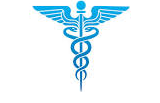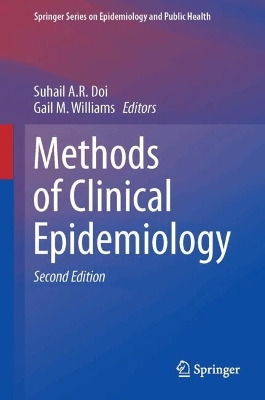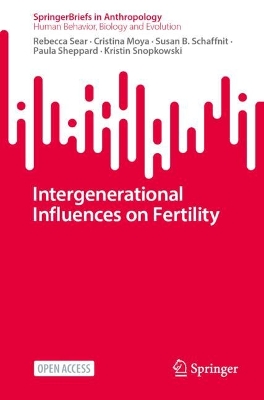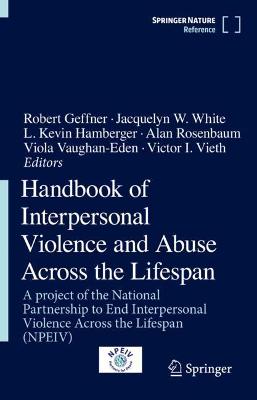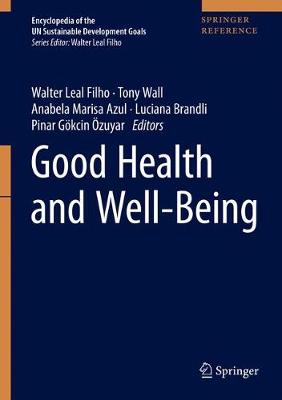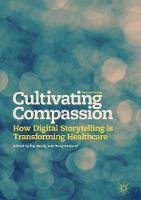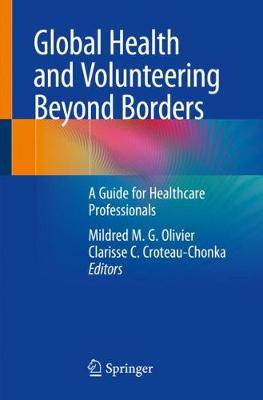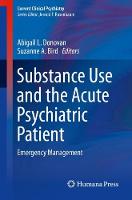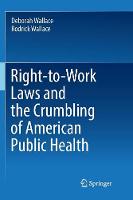Music and Public Health
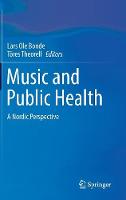 -15%
portes grátis
-15%
portes grátis
Music and Public Health
A Nordic Perspective
Bonde, Lars Ole; Theorell, Toeres
Springer International Publishing AG
06/2018
241
Dura
Inglês
9783319762395
15 a 20 dias
553
Ola Ekholm & Lars Ole Bonde (DK): A Danish Music and Public Health Study: Some conclusions and consequences for preventive projects Abstract: A summary of the first Danish study on music and Public Health with 14.000 respondents will include selected results from the study and a discussion of how this new knowledge may inform future preventive projects.
Toeres Theorell (maybe with coauthors) (S): Musicality and creativity: The role of musical abilities as predictors. Abstract: There is a well-established statistical relationship between musical ability (rhythm, pitch, and melody) and general intelligence. In our group we have also examined the relationship between amount (total hours) of life-long musical practice on one hand and poor capacity to handle emotions (alexithymia) on the other hand. Our studies have been based upon 27-54-year-old twins in the Swedish Twin Registry. We have shown that both in men and women there is a significant negative relationship between numbers of music practice hours and poor ability to handle emotions - alexithymia. In other words, music practice statistically protects individuals in the population from alexithymia. As a measure of alexithymia, we have used the total score (TAS 20) of three aspects of alexithymia, namely ability to differentiate emotions, ability to put words on emotions, and ability to externalize feelings. However, according to twin modeling analyses, the relationship between amount of music practice and alexithymia is determined mainly by genetic factors influencing both alexithymia and amount of practice (via motivational processes). Our results similarly show that a high level of musical achievement (ranging from inactivity in music to being an amateur and to being an advanced professional) is associated with good emotional ability and that high writing achievement also independently contributes to good emotional ability. Independently of writing and musical ability, for men high achievement in visual arts and for women high achievement in theatre performing contribute to good emotional ability. We have recently extended these studies to the examination of the association between musicality (objective tests of rhythm, melody, and pitch ability) and likelihood of working in a creative occupation. It is hypothesized that musicality is an important aspect of creative thinking and that both emotional capacity (the opposite of alexithymia) and general intelligence contribute to this likelihood. Using a job exposure matrix (O*Net), we find - as expected - that high age, high educational level, and high general intelligence level all contribute to the likelihood of working in a creative occupation. However, adding to these expected findings, we also find for men that a high score for musical pitch contributes to likelihood of working in a creative occupation. For women, a low score for alexithymia contributes to this likelihood as well. These associations were not affected when all musician participants were excluded from the analyses. In other words, there is, for instance, an independent relationship in men between a high score for pitch and likelihood of working in a creative occupation regardless of musician identity.
Our research results point at a complex web of musical (and, in general, artistic) experiences as well as emotional skills as being of importance for recruiting and maintaining workers in creative occupations. The findings are partly gender specific. In the chapter, we are going to discuss possible causal and non-causal pathways explaining these associations as well as possible societal implications.
Fredrik Ullen (with members of his team) (S): Topic to be decided(Abstract to follow)
Steinar Krokstad (with co-author(s) to be identified) (N): HUNT data on music and health revisited (Abstract to follow)
PART TWO: THEORY
Suvi Saarikallio & Margarida Baltazar (SF): Music as a forum for social-emotional health Abstract: A review and discussion of recent research on how music contributes to social-emotional competence, well-being, and related growth.
Brynjulf Stige (N) (and maybe also Karette Stensaeth (N)): Health musicking and prophylaxis Abstract (preliminary): A discussion of the concepts of Health and Participation in the context of the book.
PART THREE: MUSIC AS A PROPHYLACTIC RESOURCE - CLINICAL/PRACTICAL PUBLIC HEALTH INITIATIVES
Eva Bojner Horwitz (S): Humanizing a working environment with cultural and musical activitiesAbstract: The article summarizes a number of research studies on how participation in cultural activities and art experience - using the specific model of the "Cultural Palette" - can help people reduce exhaustion, increase emotional regulation, and improve health and well-being. The purpose is to document that cultural activities at work can serve as a buffer against exhaustion.
Kari Bjerke-Batt-Rawden & Gunnar Telnes (N): The Health Musicking Program - new approach to promoting health and quality of life in local contextsAbstract: Introduction: Few researchers have used action research, involving participants from local communities, to implement musical activities to promote health. This project will provide knowledge that will inform health promotion initiatives in local communities, including examples.
Aim: The main purpose is to increase knowledge as to how musical activities can promote mental and somatic health. More specifically, how men and women in local communities can gain increased health, sense of coherence (SOC), and quality of life by participating in 'The health Musicking program' led by health professionals/project leaders.
The Health Musicking Program: The health musicking program focuses on whether participants could, through exposure to and exchange of new musical materials and practices, learn to use music as a 'technology' of health promotion and self-care. Through involvement in this program, self-awareness and consciousness may be enhanced through the informal learning process, hence be adopted as a coping strategy independent of age, gender, diagnoses, illnesses, and cultural differences. Health benefits from health musicking may reduce the need for medication and treatment, and promote wellness, health, and SOC. The program may contribute to a wider understanding of musical activities as a method or strategy in public health, health promotion, and rehabilitation. Users will contribute in all phases of the program, in line with the participatory action research strategy.
Anne Haugland Balsnes (N): Choral singing for a better lifeAbstract: The chapter presents seven choral singers with different backgrounds, life situations, and choir types. The narratives are based upon a number of the author's empirical studies. Aim of the chapter is to document how choral singing can be health promoting independent of choir type and musical level and other background factors. The cases will be discussed in a theoretical perspective.
Tora Soenderstroem & Gro Trondalen (N): Group music therapy for first-time mothers and their infants at local community health care centresAbstract: The article explores the experience of nine first-time mothers participating in a music therapy group at their local community healthcare centre together with their young infants. The mothers and infants were a non-clinical group. The main goal of the study was to gain knowledge about what music therapy can offer this population, and to explore how a music therapy group could be carried out at community healthcare centres.
Stine L. Jacobsen (possibly with Helle Nystrup Lund and Lars Rye Bertelsen (DK): Music as integral part of 'Culture by prescription'Abstract: The chapter will present results of the first phase in the project 'Culture by prescription' in the municipality of Aalborg (2016-17). Participants are citizens with long-term sick leave due to stress, anxiety, and depression. The program includes two music elements: specially arranged meetings and concerts with the regional symphony orchestra and the guided use of a newly developed music app: "The Music Star."
Ola Ekholm & Lars Ole Bonde (DK): A Danish Music and Public Health Study: Some conclusions and consequences for preventive projects Abstract: A summary of the first Danish study on music and Public Health with 14.000 respondents will include selected results from the study and a discussion of how this new knowledge may inform future preventive projects.
Toeres Theorell (maybe with coauthors) (S): Musicality and creativity: The role of musical abilities as predictors. Abstract: There is a well-established statistical relationship between musical ability (rhythm, pitch, and melody) and general intelligence. In our group we have also examined the relationship between amount (total hours) of life-long musical practice on one hand and poor capacity to handle emotions (alexithymia) on the other hand. Our studies have been based upon 27-54-year-old twins in the Swedish Twin Registry. We have shown that both in men and women there is a significant negative relationship between numbers of music practice hours and poor ability to handle emotions - alexithymia. In other words, music practice statistically protects individuals in the population from alexithymia. As a measure of alexithymia, we have used the total score (TAS 20) of three aspects of alexithymia, namely ability to differentiate emotions, ability to put words on emotions, and ability to externalize feelings. However, according to twin modeling analyses, the relationship between amount of music practice and alexithymia is determined mainly by genetic factors influencing both alexithymia and amount of practice (via motivational processes). Our results similarly show that a high level of musical achievement (ranging from inactivity in music to being an amateur and to being an advanced professional) is associated with good emotional ability and that high writing achievement also independently contributes to good emotional ability. Independently of writing and musical ability, for men high achievement in visual arts and for women high achievement in theatre performing contribute to good emotional ability. We have recently extended these studies to the examination of the association between musicality (objective tests of rhythm, melody, and pitch ability) and likelihood of working in a creative occupation. It is hypothesized that musicality is an important aspect of creative thinking and that both emotional capacity (the opposite of alexithymia) and general intelligence contribute to this likelihood. Using a job exposure matrix (O*Net), we find - as expected - that high age, high educational level, and high general intelligence level all contribute to the likelihood of working in a creative occupation. However, adding to these expected findings, we also find for men that a high score for musical pitch contributes to likelihood of working in a creative occupation. For women, a low score for alexithymia contributes to this likelihood as well. These associations were not affected when all musician participants were excluded from the analyses. In other words, there is, for instance, an independent relationship in men between a high score for pitch and likelihood of working in a creative occupation regardless of musician identity.
Our research results point at a complex web of musical (and, in general, artistic) experiences as well as emotional skills as being of importance for recruiting and maintaining workers in creative occupations. The findings are partly gender specific. In the chapter, we are going to discuss possible causal and non-causal pathways explaining these associations as well as possible societal implications.
Fredrik Ullen (with members of his team) (S): Topic to be decided(Abstract to follow)
Steinar Krokstad (with co-author(s) to be identified) (N): HUNT data on music and health revisited (Abstract to follow)
PART TWO: THEORY
Suvi Saarikallio & Margarida Baltazar (SF): Music as a forum for social-emotional health Abstract: A review and discussion of recent research on how music contributes to social-emotional competence, well-being, and related growth.
Brynjulf Stige (N) (and maybe also Karette Stensaeth (N)): Health musicking and prophylaxis Abstract (preliminary): A discussion of the concepts of Health and Participation in the context of the book.
PART THREE: MUSIC AS A PROPHYLACTIC RESOURCE - CLINICAL/PRACTICAL PUBLIC HEALTH INITIATIVES
Eva Bojner Horwitz (S): Humanizing a working environment with cultural and musical activitiesAbstract: The article summarizes a number of research studies on how participation in cultural activities and art experience - using the specific model of the "Cultural Palette" - can help people reduce exhaustion, increase emotional regulation, and improve health and well-being. The purpose is to document that cultural activities at work can serve as a buffer against exhaustion.
Kari Bjerke-Batt-Rawden & Gunnar Telnes (N): The Health Musicking Program - new approach to promoting health and quality of life in local contextsAbstract: Introduction: Few researchers have used action research, involving participants from local communities, to implement musical activities to promote health. This project will provide knowledge that will inform health promotion initiatives in local communities, including examples.
Aim: The main purpose is to increase knowledge as to how musical activities can promote mental and somatic health. More specifically, how men and women in local communities can gain increased health, sense of coherence (SOC), and quality of life by participating in 'The health Musicking program' led by health professionals/project leaders.
The Health Musicking Program: The health musicking program focuses on whether participants could, through exposure to and exchange of new musical materials and practices, learn to use music as a 'technology' of health promotion and self-care. Through involvement in this program, self-awareness and consciousness may be enhanced through the informal learning process, hence be adopted as a coping strategy independent of age, gender, diagnoses, illnesses, and cultural differences. Health benefits from health musicking may reduce the need for medication and treatment, and promote wellness, health, and SOC. The program may contribute to a wider understanding of musical activities as a method or strategy in public health, health promotion, and rehabilitation. Users will contribute in all phases of the program, in line with the participatory action research strategy.
Anne Haugland Balsnes (N): Choral singing for a better lifeAbstract: The chapter presents seven choral singers with different backgrounds, life situations, and choir types. The narratives are based upon a number of the author's empirical studies. Aim of the chapter is to document how choral singing can be health promoting independent of choir type and musical level and other background factors. The cases will be discussed in a theoretical perspective.
Tora Soenderstroem & Gro Trondalen (N): Group music therapy for first-time mothers and their infants at local community health care centresAbstract: The article explores the experience of nine first-time mothers participating in a music therapy group at their local community healthcare centre together with their young infants. The mothers and infants were a non-clinical group. The main goal of the study was to gain knowledge about what music therapy can offer this population, and to explore how a music therapy group could be carried out at community healthcare centres.
Stine L. Jacobsen (possibly with Helle Nystrup Lund and Lars Rye Bertelsen (DK): Music as integral part of 'Culture by prescription'Abstract: The chapter will present results of the first phase in the project 'Culture by prescription' in the municipality of Aalborg (2016-17). Participants are citizens with long-term sick leave due to stress, anxiety, and depression. The program includes two music elements: specially arranged meetings and concerts with the regional symphony orchestra and the guided use of a newly developed music app: "The Music Star."
